Digital Collections at the University of Richmond
Rare Books and Special Collections

Wyatt Tee Walker Collection
The Dr. and Mrs. Wyatt Tee Walker Collection, donated by the Rev. Dr. Walker and his wife, Theresa Ann, contains material pertaining to the Walkers’ civil rights activities including with Dr. Martin Luther King Jr. at SCLC, work as pastor at several important churches including Gillfield Baptist Church and Canaan Baptist Church, and scholarly work on ethnomusicology. Digitized material includes audio recordings, video recordings, and digitized images from the collection.

Civil War Sheet Music
The Civil War Era Sheet Music collection contains nearly 35 different pieces of music held by Boatwright Library.
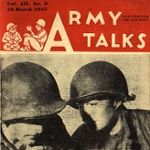
Army Talks
Army Talks was the newsletter published by the U. S. Army’s Orientation Branch for its forces in the European Theatre of Operations.

G.I. Roundtable
The G. I. Roundtable pamphlet series was created by the Historical Service Board of the American Historical Association under the direction of the U. S. Army’s Division of Education and Information.
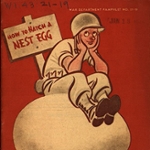
General Publications
Various War Department Pamphlets published during World War II.
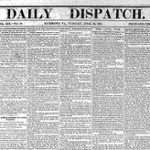
The Daily Dispatch: 1860-1865
The Dispatch, a Richmond newspaper, reported on local and world events, creating snapshots of daily life. This collection spans the course of the Civil War, documenting a period of dramatic change for the city and the nation.

Sail Away
Sail Away is a digital exhibit highlighting a mysterious, mid-nineteenth century ship’s journal located in Boatwright Memorial Library’s Rare Books and Special Collections.
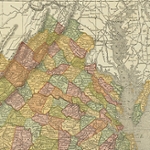
“Dear Congressman Abbitt”: Virginians and National Politics, 1948-1973
Rep. Watkins Moorman Abbitt served in the U.S. House of Representatives from 1948 to 1973, representing Virginia’s Fourth Congressional district. In 1954, he became a leader of white Virginian's "massive resistance" to integrated public schools.
Student-Created Collections
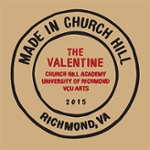
The Fight for Knowledge
Students enrolled in the course “Civil Rights and Education in Richmond, VA: A Documentary Theater Project,” compiled a wealth of material from interviews and research into the history of Richmond's educational system.

Race and Racism
Race & Racism at the University of the Richmond is an interdisciplinary, community-based project providing online access to selected archival resources housed at Virginia Baptist Historical Society, Rare Books & Special Collections at the University of Richmond, and The Collegian Newspaper Archive
University History & Archival Collections

Westhampton College Oral Histories
This collection of interviews, conducted between 1975 and 1988, documents the history of Westhampton College, University of Richmond’s women’s college.

Oral Histories
The oral history collection includes interviews with University staff, alumni, and faculty, conducted by students of American Studies courses. Topics include campus life, alumni, and student protests.
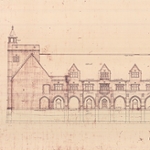
Architectural Drawings & Blueprints
This collection contains a selection of blueprints and architectural drawings of the grounds and buildings of University of Richmond.
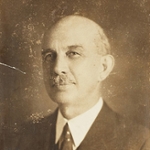
Boatwright Correspondence
Dr. Frederic W. Boatwright served as president of the University of Richmond from 1895–1946. This collection consists of correspondence from his 51-year tenure as president.
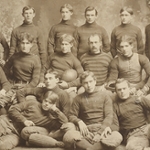
UR Football Comes Home
In 1878, the two literary societies, Phiologian and Mu Sigma Rho, organized football teams in order to develop the sport at Richmond College and for two years played each other on Thanksgiving Day. This collection honors the history of the UR football program from its earliest beginnings through our national championship season to today.
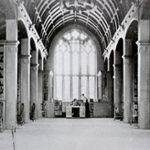
For the Centuries: 100 Years at Westhampton
This collection offers a window into the 1910 move of Richmond College from Lombardy and Grace Streets to its current location, as well as the founding of Westhampton College through publications, maps, images, and other materials.

Race and Racism
Race & Racism at the University of the Richmond is an interdisciplinary, community-based project providing online access to selected archival resources housed at Virginia Baptist Historical Society, Rare Books & Special Collections at the University of Richmond, and The Collegian Newspaper Archive
University & Student Publications
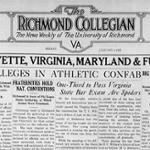
Collegian Archives
The Collegian is the independent weekly newspaper published since 1914 by the students at the University of Richmond. This digital collection includes issues published prior to the online publication, which began in 2014.
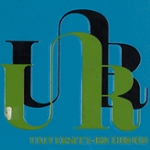
Yearbooks
This collection of yearbooks consists of The Spider, The Tower, and The Web: The Spider, published by Richmond College between 1897 and 1921; The Tower, published by Westhampton College between 1918 and 1932; and The Web, a joint yearbook published by both Richmond College and Westhampton College, 1922-2002.

Messenger
This collection consists of a student-published literary magazine, The Messenger. First published in 1876 as Monthly Musings, The Messenger evolved from a catch-all publication of news and notes to a literary and arts publication that continues today.
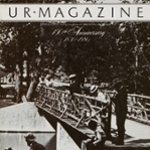
University of Richmond Magazine
This collection of university publications on UR Scholarship Repository includes University of Richmond Magazine; the student-run literary magazine The Messenger; news and culture publication Forum Magazine; and others.
Digital Scholarship Lab
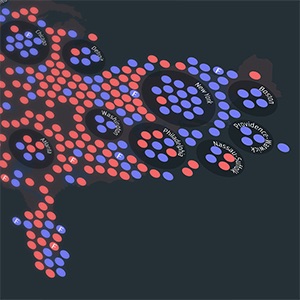
Electing the House of Representatives
The most democratic body in the federal government, hundreds of representatives for the House are elected every other year. This site maps elections from before the Civil War until today showing changing patterns across regions and between urban and rural areas.

Mapping Inequality
Mapping Inequality offers unprecedented online access to the national collection of redlining maps produced between 1935 and 1940 by one of the New Deal's most important agencies, the Home Owners' Loan Corporation.

Renewing Inequality
For a quarter century the federal government provided funding for cities large and small to clear "blighted" slums to clear land for public housing, highways, industry, and commerce. Through this program they displaced hundreds of thousands of families from their homes and neighborhoods. Renewing Inequality visualizes those displacements and urban renewal more generally.

Foreign-Born Migration
At all points in its history, a significant proportion of the population of the United States had been born in other countries and regions. This being the case, American history can never be understood by just looking within its borders. The culture and politics of the US have always been profoundly shaped by the material and emotional ties many of its residents have had to the places where they were born. This map will allow you to begin to explore those connections at the basic level of demographic statistics.
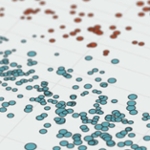
Forced Migration of Enslaved People
This map visualizes the forced migration of approximately 850,000 enslaved men, women, and children in the American South in the half century before the Civil War, most through the domestic slave trade.

Canals
This maps the dozens of canals constructed in the nineteenth century that transformed the American economy by connecting the areas west of the Appalachian Mountains to eastern population centers and Atlantic ports.
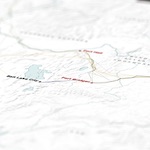
Overland Trails
During the 1840s tens of thousands of American migrants made long journeys through the American West seeking land in Oregon, gold in California, and religious liberty in Utah.

Executive Abroad
No sitting American president traveled outside the country before Theodore Roosevelt traveled to Panama in 1906 to see the construction of the Panama Canal. A century later Air Force One regularly carries the head of the executive branch to all corners of the world. The Executive Abroad maps the international trips of presidents and secretaries of state.

Secession: Virginia and the Crisis of Union
In light of Abraham Lincoln's election and South Carolina's secession, Virginia delegates met on February 13, 1861 and voted to remain in the Union. Two months later, the same men voted to secede from the United States. This collection contains the transcribed text of these debates along with accompanying contextual information.